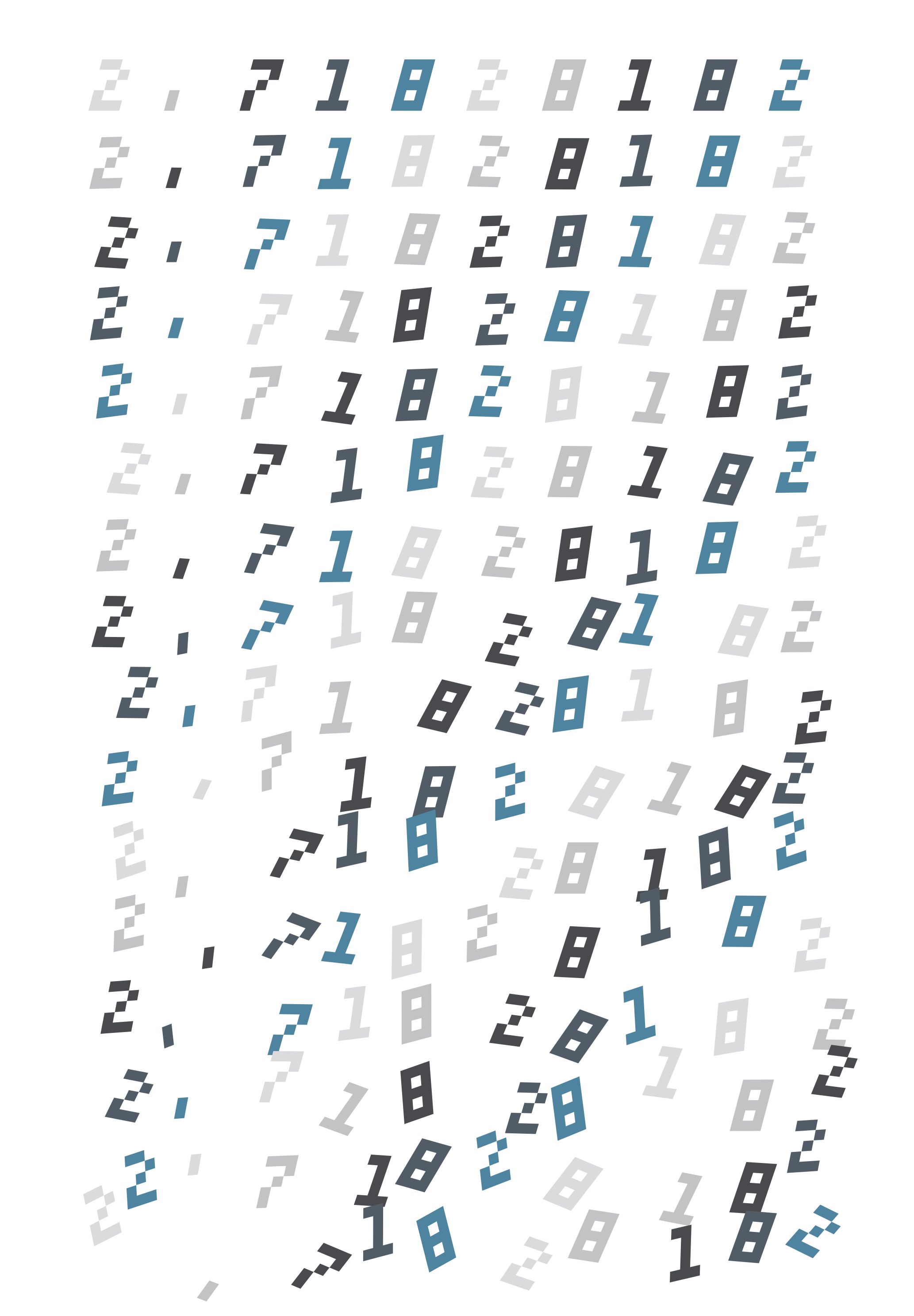

This piece is inspired by the work Schotter (Gravel) by Georg Nees (1968). Georg Nees is considered one of the founders of computer art and graphics. Nees studied mathematics and physics at the universities of Erlangen-Nuremberg and Stuttgart. He subsequently worked for Siemens as a software engineer, and was instrumental in their purchasing a ‘Zuse Graphomat’, a drawing machine operated by computer-generated punched tape. The machine was capable of creating geometric patterns and, although the programming language that Nees used (ALGOL) was designed specifically for scientific computers, Nees used it to create aesthetic images such as this one. Nees was interested in the relationship between order and disorder in picture composition. In the artwork Schotter he introduced random variables into the computer program, causing the orderly squares to descend into chaos.
Schotter — Take IV is part of the Generative Art Recoded Project (GARP). This is an effort to preserve pioneering generative artworks by translating them into a modern programming language (Processing). Indeed, in most cases, the original code underlying these early masterpieces got lost, unfortunately. My goal is also to offer a learning resource of Processing for both art and science students using the same challenging process I followed: (1) start from the original artwork; (2) reverse engineer the code; (3) match the outcomes of the code with the original artwork and possibly tune the code accordingly; (4) tweak the code to obtain derivative versions of the original. Some of the derivative works I obtained, including the reversed code itself, are tokenized as non-fungible tokens. Therefore, they are saved and preserved on an immutable and, hopefully, eternal distributed ledger (Ethereum). Read the full story on Medium (https://medium.com/@hex6c/generative-art-recoded-675c3eabb2f2).
SuperRare makes it easy to create, sell, and collect rare digital art. SuperRare's smart contract platform allows artists to release limited-edition digital artwork tracked on the blockchain, making the pieces rare, verified, and collectible. Filter the crypto art world's best selling works by artist name, creation type, and year of birth on OpenSea.
- Sales
- Transfers
Schotter — Take IV

- PriceUSD PriceQuantityExpirationFrom
- PriceUSD PriceQuantityFloor DifferenceExpirationFrom
This piece is inspired by the work Schotter (Gravel) by Georg Nees (1968). Georg Nees is considered one of the founders of computer art and graphics. Nees studied mathematics and physics at the universities of Erlangen-Nuremberg and Stuttgart. He subsequently worked for Siemens as a software engineer, and was instrumental in their purchasing a ‘Zuse Graphomat’, a drawing machine operated by computer-generated punched tape. The machine was capable of creating geometric patterns and, although the programming language that Nees used (ALGOL) was designed specifically for scientific computers, Nees used it to create aesthetic images such as this one. Nees was interested in the relationship between order and disorder in picture composition. In the artwork Schotter he introduced random variables into the computer program, causing the orderly squares to descend into chaos.
Schotter — Take IV is part of the Generative Art Recoded Project (GARP). This is an effort to preserve pioneering generative artworks by translating them into a modern programming language (Processing). Indeed, in most cases, the original code underlying these early masterpieces got lost, unfortunately. My goal is also to offer a learning resource of Processing for both art and science students using the same challenging process I followed: (1) start from the original artwork; (2) reverse engineer the code; (3) match the outcomes of the code with the original artwork and possibly tune the code accordingly; (4) tweak the code to obtain derivative versions of the original. Some of the derivative works I obtained, including the reversed code itself, are tokenized as non-fungible tokens. Therefore, they are saved and preserved on an immutable and, hopefully, eternal distributed ledger (Ethereum). Read the full story on Medium (https://medium.com/@hex6c/generative-art-recoded-675c3eabb2f2).
SuperRare makes it easy to create, sell, and collect rare digital art. SuperRare's smart contract platform allows artists to release limited-edition digital artwork tracked on the blockchain, making the pieces rare, verified, and collectible. Filter the crypto art world's best selling works by artist name, creation type, and year of birth on OpenSea.
- Sales
- Transfers